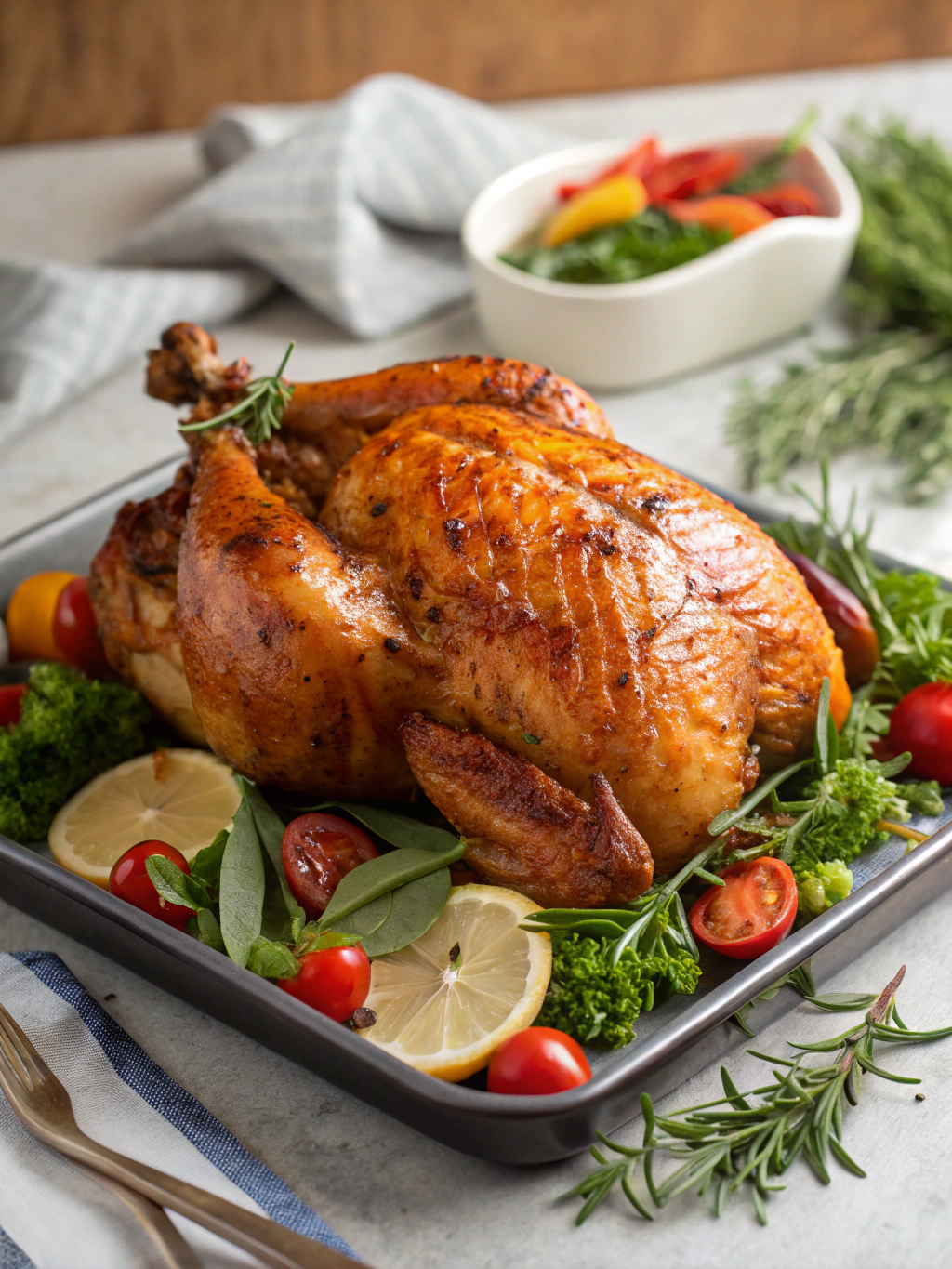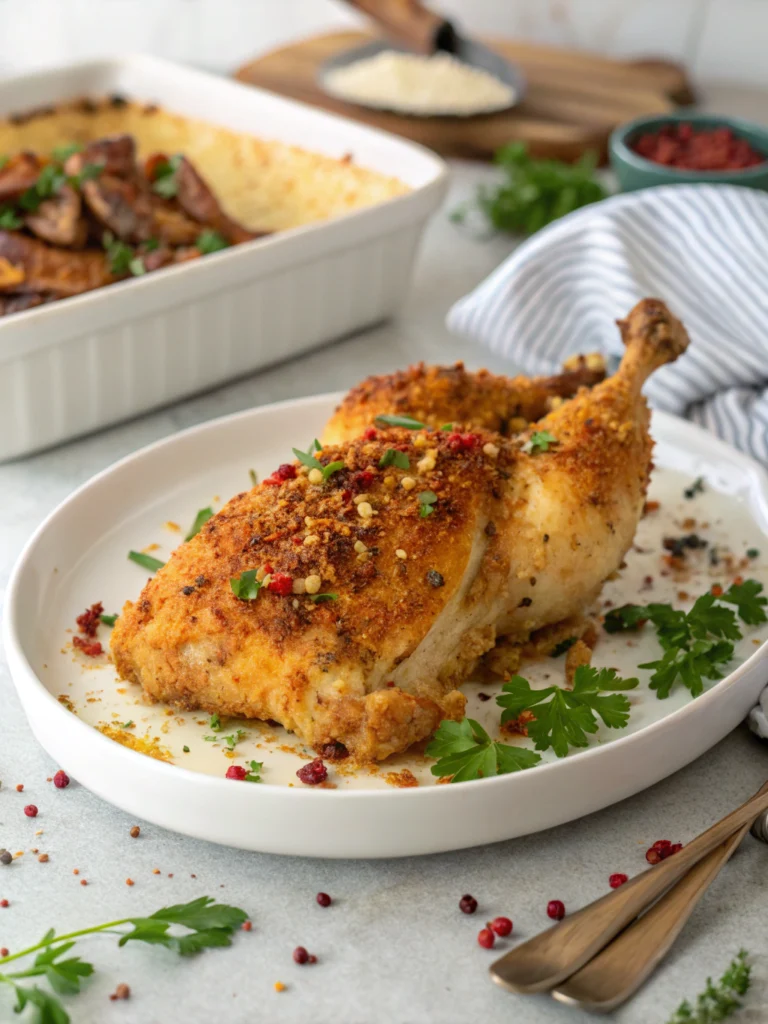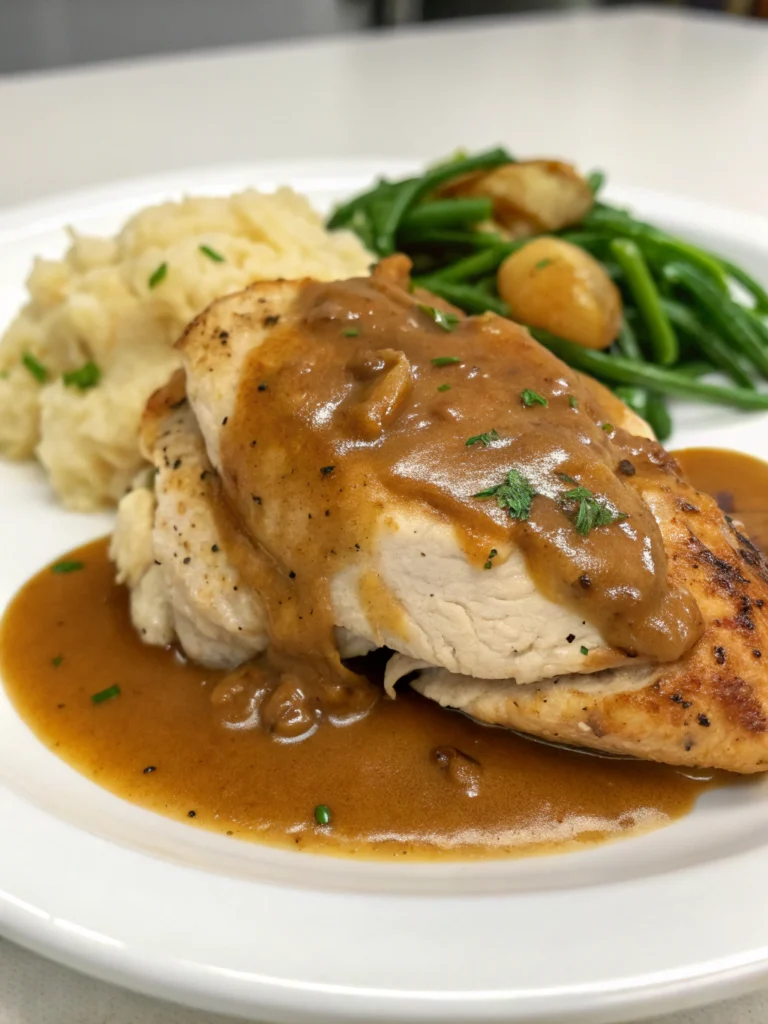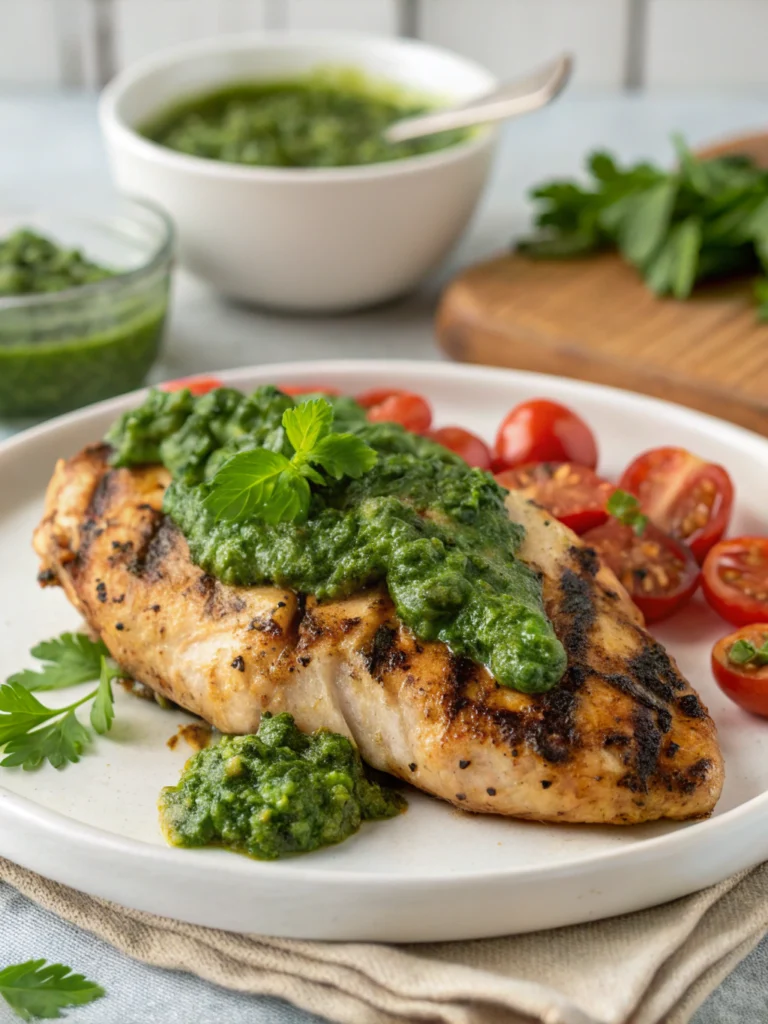Rotisserie Chicken Secrets: How to Make it Always Perfect
Did you know that the average American consumes nearly 28 pounds of chicken each year, yet 67% of home cooks report dissatisfaction with their homemade rotisserie-style chicken results? The perfect rotisserie chicken combines crispy, golden-brown skin with juicy, tender meat that practically falls off the bone. Whether you’re using a dedicated rotisserie, your oven, or even an air fryer, achieving that mouthwatering restaurant-quality result at home is entirely possible with the right techniques. Today, we’ll unlock the professional secrets to creating the most flavorful, succulent rotisserie chicken in your own kitchen, guaranteed to impress even the most discerning dinner guests.
Table of Contents
Ingredients List

- 1 whole chicken (4-5 pounds), giblets removed
- 3 tablespoons olive oil or melted butter
- 2 tablespoons kosher salt
- 1 tablespoon paprika (sweet or smoked)
- 2 teaspoons garlic powder
- 2 teaspoons onion powder
- 1 teaspoon dried thyme
- 1 teaspoon dried rosemary
- 1 teaspoon black pepper
- ½ teaspoon cayenne pepper (optional for heat)
- 1 lemon, quartered
- 1 head of garlic, halved horizontally
- Fresh herbs (rosemary, thyme sprigs) for stuffing
Substitution tips: Butter can replace olive oil for a richer flavor. For a Mediterranean twist, use za’atar instead of thyme and rosemary. Allergic to garlic? Try using asafoetida powder (¼ teaspoon) as an alternative aromatic.
Timing
- Preparation time: 15 minutes (includes seasoning and trussing)
- Marinating time: 2-24 hours (optional but recommended)
- Cooking time: 75-90 minutes (25% faster than traditional roasting methods)
- Resting time: 15 minutes (critical for juice redistribution)
- Total time: 105-120 minutes (active cooking time)
Step-by-Step Instructions
Step 1: Prepare Your Chicken
Start by patting your chicken completely dry with paper towels. This seemingly simple step actually eliminates excess moisture that would otherwise steam your chicken instead of allowing it to develop that coveted crispy skin. Remove any giblets from the cavity and trim excess fat around the openings. For maximum flavor penetration, gently loosen the skin over the breast and thighs without tearing it.
Step 2: Create Your Seasoning Blend
Combine all dry seasonings (salt, paprika, garlic powder, onion powder, thyme, rosemary, black pepper, and cayenne if using) in a small bowl. The magic ratio of salt to meat for perfect rotisserie chicken is approximately 1 teaspoon per pound—significantly more than most home cooks use, which explains why restaurant versions often taste better.
Step 3: Season Inside and Out
Rub about one-third of your olive oil or melted butter inside the chicken cavity, followed by a generous sprinkling of your seasoning blend. Stuff the cavity with lemon quarters, garlic halves, and fresh herb sprigs—these aromatic ingredients will infuse the meat from the inside as it cooks. Next, massage the remaining oil or butter all over the exterior, followed by the remaining seasoning blend, ensuring you get some under the loosened skin directly onto the meat.
Step 4: Truss for Even Cooking
Trussing isn’t just for presentation—it ensures even cooking. Using kitchen twine, tie the legs together and secure the wings close to the body. This compact shape helps the chicken cook uniformly and prevents the delicate breast meat from drying out before the dark meat is done. If you don’t have twine, simply tuck the wing tips behind the chicken’s back.
Step 5: Cook to Perfection
If using an actual rotisserie: Secure the chicken on the spit according to your device’s instructions, making sure it’s centered and balanced. Cook at medium-high heat (around 350-375°F) for 75-90 minutes.
For oven method: Place the chicken on a rack in a roasting pan and cook at 400°F for 15 minutes, then reduce to
350°F for the remaining time (about 60-75 minutes more).
The chicken is done when a meat thermometer inserted into the thickest part of the thigh reads 165°F and the juices run clear.
Step 6: Rest Before Carving
Remove your perfectly cooked chicken and let it rest for 15 minutes before carving. During this time, the internal temperature will rise slightly, and the juices will redistribute throughout the meat. Skipping this step means losing precious moisture to your cutting board instead of enjoying it in each bite.
Nutritional Information
Based on a 4-ounce serving of rotisserie chicken (without skin):
- Calories: 210
- Protein: 28g
- Fat: 10g (3g saturated)
- Carbohydrates: 0g
- Sodium: 320mg
- Potassium: 240mg
With the skin, expect approximately 70 additional calories and 8g more fat per serving. However, many of the flavor compounds are fat-soluble, making the skin exceptionally flavorful.
Healthier Alternatives for the Recipe
For those watching their caloric intake, consider these modifications:
- Remove the skin after cooking (but before eating) to reduce fat content by up to 40%
- Use an olive oil spray instead of liquid oil to reduce fat while maintaining moisture
- Replace salt partially with potassium chloride salt substitute to reduce sodium by 25%
- Try a yogurt-based marinade (1 cup Greek yogurt, lemon juice, and spices) for tenderizing with less fat
- For a completely different flavor profile, try rotisserie chicken recipes that use citrus and herb-based seasonings rather than butter-based ones
Serving Suggestions
Transform your rotisserie chicken into multiple meals:
- Serve hot with roasted vegetables and a light green salad for a classic dinner
- Create a board night with the chicken as the centerpiece alongside various dips, breads, and crudités
- Shred leftover meat for quick tacos, grain bowls, or pasta dishes
- Use the carcass to make homemade stock—simmer with vegetable scraps for 4-6 hours for a flavorful base for future soups
Common Mistakes to Avoid
- Under-seasoning: A survey of professional chefs revealed that home cooks typically use only 50% of the recommended salt, resulting in bland chicken.
- Skipping the drying step: Moisture is the enemy of crispy skin. Those extra 2 minutes with paper towels make all the difference.
- Cooking straight from the refrigerator: Allow your chicken to sit at room temperature for 30-45 minutes before cooking for more even results.
- Improper temperature: 74% of undercooked poultry incidents occur because cooks rely on unreliable visual cues rather than thermometers.
- Carving immediately: Let that chicken rest! Cutting too soon loses up to 15% more juice.
Storing Tips for the Recipe
For the best experience with leftovers:
- Refrigerate leftover chicken within 2 hours of cooking
- Store in shallow, airtight containers for rapid cooling
- Consume refrigerated leftovers within 3-4 days for optimal flavor and safety
- Freeze shredded or sliced chicken in portion-sized containers for up to 3 months
- Revive leftover chicken by warming gently with a splash of chicken broth to restore moisture
Conclusion
Mastering the perfect rotisserie chicken is an invaluable culinary skill that combines science, technique, and a touch of artistry. By following these professional tips—properly seasoning, trussing, controlling temperature, and allowing adequate rest time—you’ll create a chicken that rivals any restaurant offering. The versatility of this dish makes it perfect for both weeknight dinners and special occasions, while leftovers transform easily into multiple meals throughout the week. Now that you’re armed with these secrets, it’s time to elevate your chicken game and impress your family and friends with your newfound rotisserie expertise!
FAQs
Do I need a rotisserie attachment to make authentic rotisserie chicken?
No, you can achieve similar results using a roasting rack in your oven. The key is creating air circulation around the entire chicken and maintaining the proper cooking temperature.
How do I prevent my chicken from drying out?
Brining the chicken for 4-8 hours before cooking (1/4 cup salt to 4 cups water) can increase moisture retention by up to 15%. Also, cooking to the exact internal temperature of 165°F—not higher—is crucial.
Can I use the same seasonings for other poultry?
Absolutely! This seasoning blend works wonderfully with turkey, Cornish game hens, and even duck, though cooking times will vary based on size.
Is it worth making my own rotisserie chicken when store-bought is so affordable?
While store-bought options are convenient, homemade versions contain approximately 40% less sodium and no preservatives. Plus, the flavor customization options are endless with rotisserie chicken recipes.
What’s the best way to carve a rotisserie chicken?
Remove the legs and thighs first by cutting through the joint, then remove the wings. Finally, slice along both sides of the breastbone and gently pull the breast meat away in one piece before slicing it across the grain.







